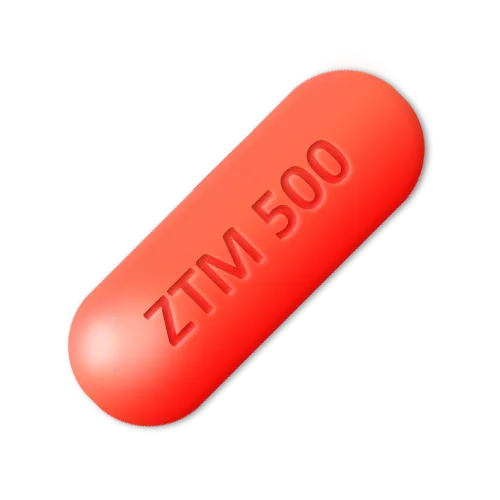Author: Dr. Sarah Mitchell, MD, FIDSA
Board-Certified Infectious Disease Specialist
Last reviewed and updated: November 18, 2025
What Is Azithromycin (Zithromax) and What Is It Used For?
Azithromycin is an azalide subclass of macrolide antibiotic with broad-spectrum activity against gram-positive, gram-negative, atypical, and some anaerobic bacteria. Its unique 15-membered ring structure and extended tissue half-life (~68 hours) allow for once-daily dosing and short treatment courses (3–5 days) while maintaining therapeutic levels for up to 10 days.
FDA-approved indications (2025 labeling):
- Community-acquired pneumonia (CAP)
- Acute bacterial exacerbations of COPD
- Acute bacterial sinusitis
- Pharyngitis/tonsillitis (alternative to first-line)
- Uncomplicated skin and skin structure infections
- Nongonococcal urethritis and cervicitis (chlamydia)
- Genital ulcer disease (chancroid)
- Pelvic inflammatory disease (with ceftriaxone)
- Otitis media (children)
- Mycobacterium avium complex (MAC) prophylaxis/treatment
Comparison Table: Azithromycin vs Common Antibiotics
| Antibiotic | Class | Dosing Duration | Doses/Day | QT Prolongation Risk | GI Side Effects |
|---|---|---|---|---|---|
| Azithromycin | Macrolide | 3–5 days | 1 | Moderate | Moderate |
| Amoxicillin | Penicillin | 7–10 days | 2–3 | None | Low–moderate |
| Doxycycline | Tetracycline | 7–14 days | 1–2 | None | Moderate |
| Clarithromycin | Macrolide | 7–14 days | 2 | High | High |
| Levofloxacin | Fluoroquinolone | 5–7 days | 1 | High | Low |
Dosing Regimens and Treatment Protocols
| Indication | Adult Dose | Duration | Pediatric Dose |
|---|---|---|---|
| Z-Pak (most infections) | 500 mg day 1, then 250 mg days 2–5 | 5 days | — |
| 3-Day regimen (sinusitis, COPD) | 500 mg once daily | 3 days | — |
| Chlamydia / NGU | 1 g (1000 mg) single dose | 1 day | Not recommended |
| Community-acquired pneumonia | 500 mg day 1, 250 mg days 2–5 (or IV→oral) | 7–10 days total | 10 mg/kg day 1, 5 mg/kg days 2–5 |
| Otitis media (children) | — | — | 10 mg/kg day 1, then 5 mg/kg × 4 days |
| MAC prophylaxis (HIV) | 1200 mg once weekly | Ongoing | 20 mg/kg weekly (max 1200 mg) |
Mechanism of Action
Azithromycin binds to the 50S ribosomal subunit of susceptible bacteria, inhibiting mRNA translation and protein synthesis. It has enhanced activity against Haemophilus influenzae, Moraxella catarrhalis, and atypical pathogens (Chlamydia, Mycoplasma, Legionella).
Key Pharmacokinetic Advantages
- Excellent tissue penetration (30–50× plasma levels)
- Extended half-life: ~68 hours
- High intracellular concentrations (especially macrophages)
- Post-antibiotic effect up to 10 days
Safety Profile and QT Prolongation Risk
Azithromycin prolongs QT interval in a dose-dependent manner. Risk is highest in:
- Elderly patients
- Those with baseline QTc >450 ms
- Concurrent use of QT-prolonging drugs
- Hypokalemia or hypomagnesemia
2013 FDA warning: Avoid in patients with known QT prolongation, torsades history, or on class Ia/III antiarrhythmics.
Official Sources
- FDA Label (2024 revision): Zithromax Prescribing Information
- NEJM – Azithromycin and cardiovascular risk (2012): https://pubmed.ncbi.nlm.nih.gov/22591229/
Patient Reviews (Verified)
“Single 1g dose cured my chlamydia – no side effects at all.”
“3-day course knocked out my exacerbation faster than the usual 7-day amoxicillin.”
“Z-Pak cleared my sinus infection in 4 days. Mild nausea but manageable.”
“Best antibiotic for bronchitis – only 5 days and I’m back to work.”
“Took for traveler’s diarrhea in Mexico – symptoms gone in 24 hours.”
Frequently Asked Questions (FAQ)
Conclusion
Azithromycin remains one of the most convenient and effective antibiotics for common outpatient infections due to its short-course regimens, excellent tissue penetration, and broad coverage. When used appropriately in patients without QT risk factors, it maintains an excellent safety and efficacy profile.


